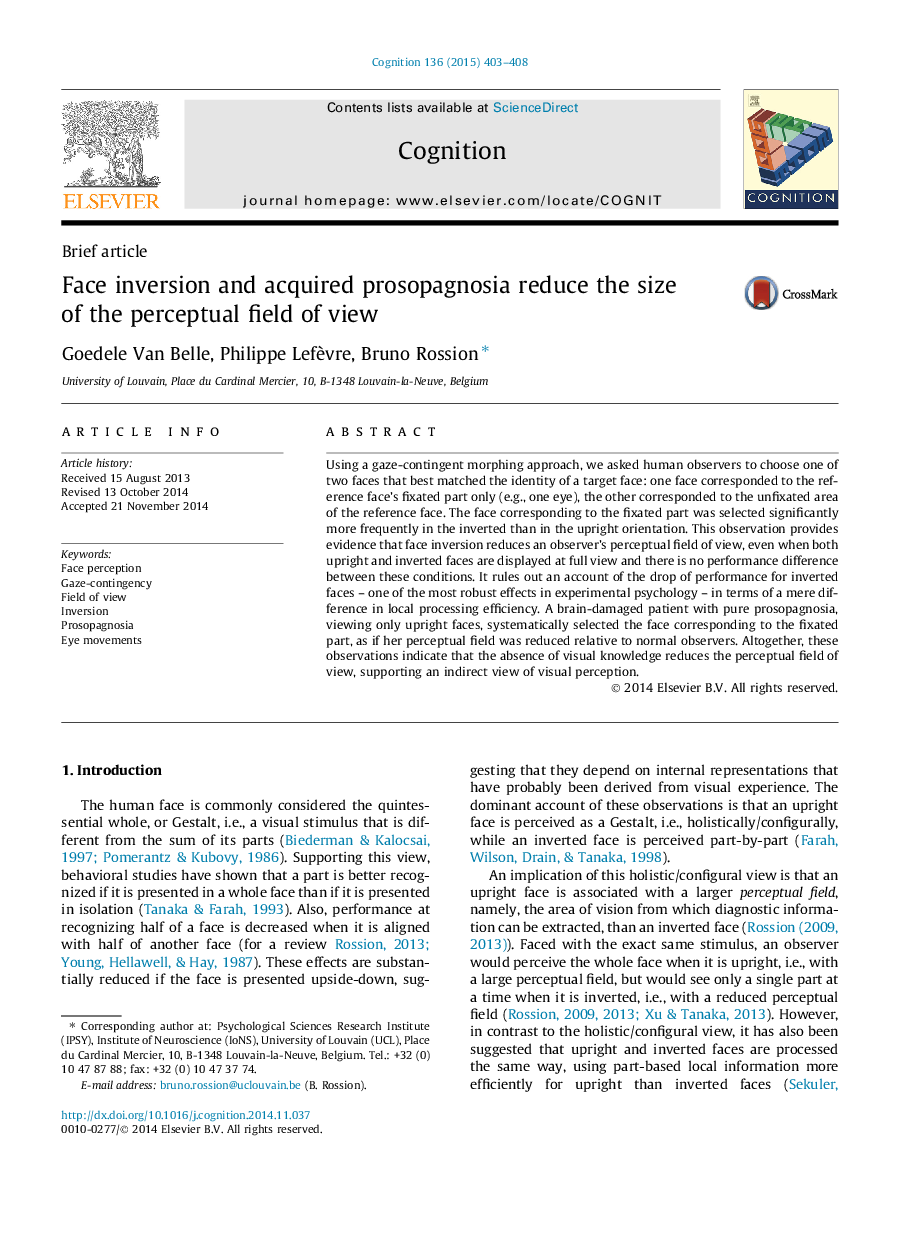| Article ID | Journal | Published Year | Pages | File Type |
|---|---|---|---|---|
| 7287492 | Cognition | 2015 | 6 Pages |
Abstract
Using a gaze-contingent morphing approach, we asked human observers to choose one of two faces that best matched the identity of a target face: one face corresponded to the reference face's fixated part only (e.g., one eye), the other corresponded to the unfixated area of the reference face. The face corresponding to the fixated part was selected significantly more frequently in the inverted than in the upright orientation. This observation provides evidence that face inversion reduces an observer's perceptual field of view, even when both upright and inverted faces are displayed at full view and there is no performance difference between these conditions. It rules out an account of the drop of performance for inverted faces - one of the most robust effects in experimental psychology - in terms of a mere difference in local processing efficiency. A brain-damaged patient with pure prosopagnosia, viewing only upright faces, systematically selected the face corresponding to the fixated part, as if her perceptual field was reduced relative to normal observers. Altogether, these observations indicate that the absence of visual knowledge reduces the perceptual field of view, supporting an indirect view of visual perception.
Related Topics
Life Sciences
Neuroscience
Cognitive Neuroscience
Authors
Goedele Van Belle, Philippe Lefèvre, Bruno Rossion,
